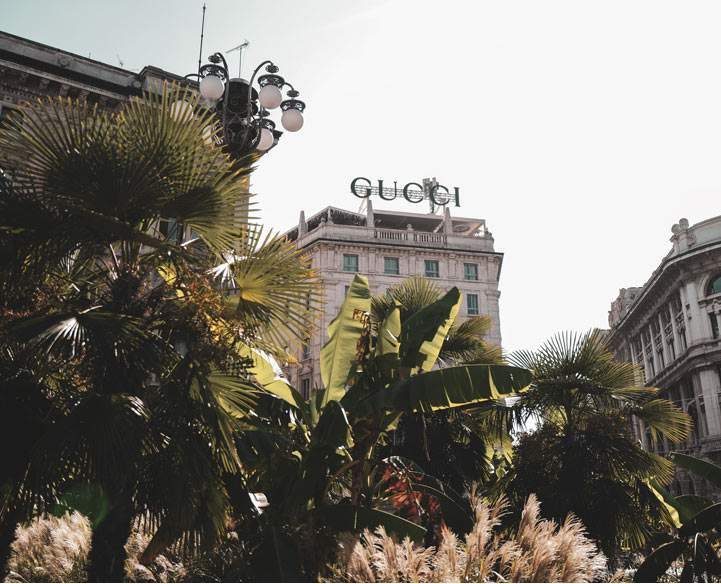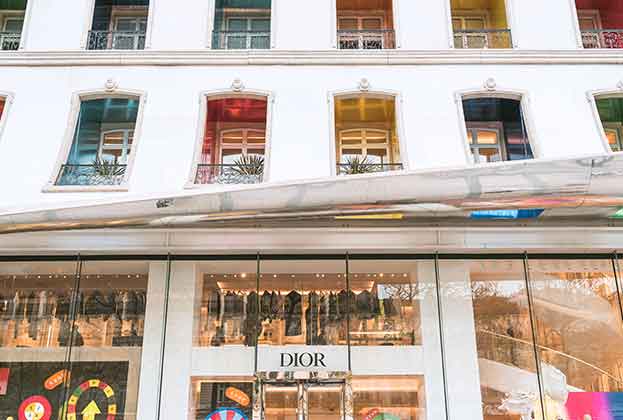Smaller luxury groups and independents stepped up activity in 2022
While the three largest luxury groups, LVMH, Richemont and Kering, continued to be acquisitive, with several reporting an increase in new store openings globally, their share of total openings softened on 2021 levels as smaller groups and independents became increasingly acquisitive.
The fact that some of the larger luxury brands have refocused on upsizing existing sites, including relocating to larger units, particularly in more established markets, will also have a bearing on this analysis as this type of activity is not picked up by our database.
In the immediate aftermath of the pandemic, it was the three largest luxury groups that continued to be acquisitive, supported by a strong balance sheet, explaining their ability to increase their share of new store openings in 2021. Confidence and appetite amongst smaller luxury groups and independents lagged behind the larger groups but made a meaningful return in the latter part of 2021. This is reflected in their greater share of new openings in 2022.
Relocations & upsizing: Elevating the physical luxury experience
The upsizing of stores by the more prominent luxury brands, particularly in their home markets, is not a new trend. It has been driven by the aspiration to elevate the luxury store experience with the ultimate aim of elevating the brand above its peers. From a practical perspective, these larger spaces allow brands to house their full product range.
One of the best examples of this elevation through the store experience is the redevelopment and upsizing of the Dior flagship on Avenue Montaigne, Paris, which reopened in 2022. The 10,000 sqm space has delivered an experiential destination, beyond just retail, which includes a gallery, restaurant, patisserie, guest suite for VIP customers and their full product range from ready-to-wear through to beauty. It is not just a place to purchase Dior products but also a place to experience the Dior brand.
And while upsizing is not a new trend, the pandemic did provide some with an opportune time to realise upsizing ambitions. Increased availability and rebased rents in some key luxury locations in response to the pandemic facilitated an increase in relocations, many of which were to larger spaces in better locations. Madison Avenue in New York is one such location and has seen a number of brands upsize and/or relocate from elsewhere on Madison or from other locations in the city. The scale of this activity meant that over the second half of 2022, the area of Madison between East 57 and East 86 Streets saw 29 new openings and relocations. According to the Madison Avenue Business Improvement District, the majority of these were relocations.
Looking to 2023, there are a further 28 units currently under development. The intensification and quality of the luxury offering on Madison will help to further elevate it as a global luxury destination. We’ve seen a similar trend on London’s Bond Street, albeit to a lesser extent. This is resulting in an intensification of luxury across its entirety and is driving rental growth beyond the core central pitch of the street.
.jpg)
Bond Street, London
Fashion brands have become more acquisitive, with specialist watch brands looking to a wider variety of markets for store expansion opportunities
In terms of brand positioning, it was the ultra-luxury brands that continued to dominate store acquisitions accounting, 68% of all new openings in 2022. Where we did see some change was in terms of product category.
Fashion & accessory brands stepped up their activity last year aided by renewed confidence considering a return to more normal lifestyles post the pandemic with a 21% increase in new store openings year-on-year. This saw its share of total new openings reach 64%, exceeding that seen the preceding year and in 2019. In contrast, we saw a decline in new openings by Jewellery & Watch brands with their share of new openings falling to 24% from 29% in 2021. However, a deeper dive into this headline category highlights that this softening was driven by reduced activity by jewellery brands with the specialist watch brands continuing to expand their stand-alone boutiques at the same level seen the preceding year.
What was interesting was the entry and expansion into new markets by specialist watch brands, helped in part by the pandemic as the absence of travel spend highlighted attractive domestic-focused markets. For example, we saw an increase in activity by specialist watch brands in a number of new first-tier and second-tier cities in China, such as Chengdu, Chongqing and Fuzhou. Likewise, in Europe, we saw store openings across a wider variety of markets, 16 in total, whereas, in 2019, it was only across eight markets. Much of this 2022 activity was focused on smaller affluent and underserved cities. Dublin, in particular, has seen a flurry of luxury watch brands, largely via a partnership with a local operator, establish standalone boutiques in the city helped, in part, by the country’s expanding luxury watch spend. For example, in 2022, Ireland ranked 25th globally in terms of the value of Swiss watch imports (CHF150.9 million), with annual growth of 25%. In 2019 the country didn’t even feature in the top 30 markets globally.
Another product category that has been boosted by evolving luxury spending trends post-pandemic has been homeware. While only accounting for a very small proportion of new openings globally (typically around 1%), we did see some increased activity by homeware brands in 2022, continuing the trend we saw the preceding year. We expect this to continue with a number of the large luxury brands actively looking to expand the store network for their home concepts, such as Fendi Casa. Growth brands such as US brand RH, which is blurring the lines between retail and hospitality, are also in global expansion mode, having secured a number of sites outside of their home market.
The major Global cities continued to dominate new openings but it was the smaller markets that drove store expansion
It wasn’t just luxury watch brands that opened new stores in a wider variety of markets last year, it was a trend that we saw across the wider luxury space. But, while the previous year we saw the focus shift to domestic-driven city markets, those that were less impacted by reduced international travel, in 2022 there was a refocus on Global Alpha cities.

Global Alpha cities, as defined by the Globalisation & World Cities Research Network (GaWC), are cities that rank highly in terms of economic, political and cultural factors. These cities include London, New York, Shanghai, Paris, Milan and Tokyo, amongst other major international cities. These Global Alpha cities saw a 25% increase in new store openings, with their share of new store openings improving to 45%. Their expanding market share was helped by the fact that many of these cities are key international destination cities and the resumption of international travel, and with it increased luxury spend, moved them back up the agenda for expansive brands.
However, in percentage terms, this growth for Global Alpha cities was largely driven by smaller Alpha markets. These include cities such as Milan, Madrid, Amsterdam, Los Angeles and Toronto cities benefitting from a strong domestic and visitor profile. And in real estate terms, increased availability within the core luxury pitch and new emerging luxury pitches within these cities helped to deliver new store opportunities. This was also reflected in the increase in new openings in gateway cities outside of the Global Alpha ranking, which were up 10% year on year.
One of the key features helping to raise the profile of these smaller Alpha and gateway markets was the elevation of the hospitality offering within these cities. Similar to the luxury retail brands, luxury hotel brands have also been in expansion mode, supported by the resilience of luxury spend, post-pandemic pent-up demand and structural shifts in spending which is elevating ‘experience’ spend. This is evidenced in Madrid with the entrance of Four Seasons Hotel and Residences which is helping to attract more HNWI into the city and create a new luxury retail destination.
And while the strategy by luxury brands to get closer to target consumers in smaller domestic markets waned somewhat (new openings in these types of markets were down 13%) their global share of new openings was still significant coming second to Global Alpha cities (market share of 35%). Where the strategy of getting closer to luxury consumers did accelerate was the in-store openings in leisure & resort markets. New openings in these markets were up 84%, albeit off a low base, accounting for 7% of all new openings globally in 2022, almost double the share seen in 2019 and 2021.
Read the other articles within 'Global Luxury Retail 2023 Outlook' below
.jpg)

